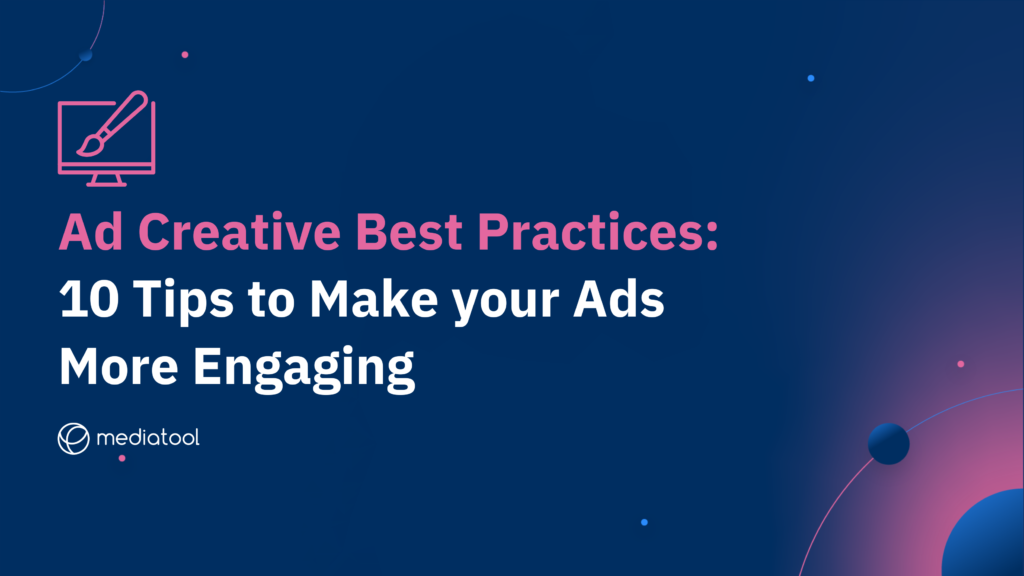Engaging ads grow brands. Sure, impressions are good for growing brand awareness. But every click is a step closer to a conversion. That’s why brands and agencies need to invest in ad creative and optimize campaigns for clicks, not reach.
Engaging ads combine great creativity with intelligent targeting.
The trouble is that online advertising platforms are getting more competitive. There are also loads of clever creatives who seemingly have a magic ability to capture customers’ attention.
But do they really? When you break down the most engaging ads, it’s not as mystical as you might think.
We’ve compiled a list of best practices for advertising that matches up data-driven engagement tactics with ad creative that captures attention. And the good news? Getting the balance right doesn’t require a huge budget or enormous effort.
Why Engaging Campaigns are Important
Good advertising design will:
- Capture your customer’s attention
- Present the key message within 2 seconds
- Motivate them to click
But ad creative best practice is only half the equation. Without audience insights and real-time campaign data, you can’t hope to optimize your ad spend or reach engagement targets.
For an ad to truly be effective, marketers and agencies need to trust their marketing data, keep up with customer trends and use the campaign management tools at their disposal.
What Makes an Engaging Ad? Online Advertising Best Practices
Ad Creative that Captures Attention
Clickable ads start with eye-catching creative. Beyond the basics, like ensuring your ad meets the platform’s size guidelines and community standards, here are some channel-agnostic tips for clickable creative.
- Consider the format carefully: Before creating your ad, consider the format that will get the message across. For example, stories are good for spontaneous product purchases, while image carousels make more sense for in-depth decisions.
- Design mobile-first: Globally, 68% of web traffic comes from mobile devices. Especially in B2C advertising – but increasingly in B2B – designing mobile-first makes your ad more accessible.
- Use less text: Let the ad design speak for itself. Although Facebook has loosened restrictions on text covering images, the best practice for paid social advertising is to keep it under 20% coverage.
- Get to the point: Supporting copy should also be short and punchy. People spend between 0.4 and 3 seconds scanning Facebook ads. Make sure they get the idea quickly.
- Add movement: Creative with movement stands out. There are plenty of tools (free and paid) to help you animate static images for paid social campaigns or create HTML5 banners for paid search.
- Make the CTA clear: Include a clear CTA in your creative. Most paid social platforms provide a CTA button, but it’s lower in the visual hierarchy and can get lost in a busy feed.
Working with an experienced designer should deliver better creatives, but there are plenty of free design tools and ad templates if time and money are tight.
Focus on keeping the key message front and center. That might be a product image, snappy CTA or the campaign offer.
Resist the temptation to clutter your ad with copy. Your audience won’t read it. Instead, dive into your data to understand what your customers consider an engaging ad.
How to Increase Ad Engagement
Data is the key to turning good creative into a high-performing ad.
While you might be mourning third-party cookies, the truth is this kind of anonymous demographic data no longer serves a purpose. At least not by itself.
Today’s audiences respond to personalization and transparency. Yet, although first-party data is a marketer’s most valuable resource, it’s often in short supply.
The solution is to augment first-party data with behavioral insights. In other words, combine what your customers tell you (zero and first-party data) with what they show you (behavioral data).
It’ll help you target your ideal customer profile more closely and provide something like a personalized experience.
- Know your audience: Combine and compare audience data to begin building out personas. Don’t get caught up in assumptions based on demographic data. Instead, focus on observed behavior and first-party data.
- Evaluate all the time: There’s no need to wait for a monthly report when you have access to real-time data from all your advertising channels. With Mediatool, you can create dynamic dashboards that provide valuable real-time feedback. Use this data to determine which channels, creatives or CTAs are working and apply that learning to optimize spending and increase ROAS.
- Make it personal: Desires and pain points are a good start, but genuinely engaging ads home in on the trigger point that encourages customers to click. Get specific with your CTAs to show your audience you understand them.
- Consider cross-channel journeys: We know customer journeys aren’t linear. Data analytics helps you avoid getting stuck in the messy middle, for example, by informing decisions about creating content that keeps leads in your brand ecosystem.
Don’t Expect to Hit the Sweet Spot on Your First Try
Start with a low budget, test variations and variables, and monitor the data to see what’s working.
Mediatool Integrations combine your paid social channels, search ads, and web analytics in a centralized campaign management hub, giving you a complete picture of real-time performance.
This insight is invaluable for brands and agencies managing complex campaigns and trying to reach diverse audiences.
With scroll-stopping creative and data-driven insight from Mediatool, your next campaign will be the one setting new standards for best practices in advertising.





